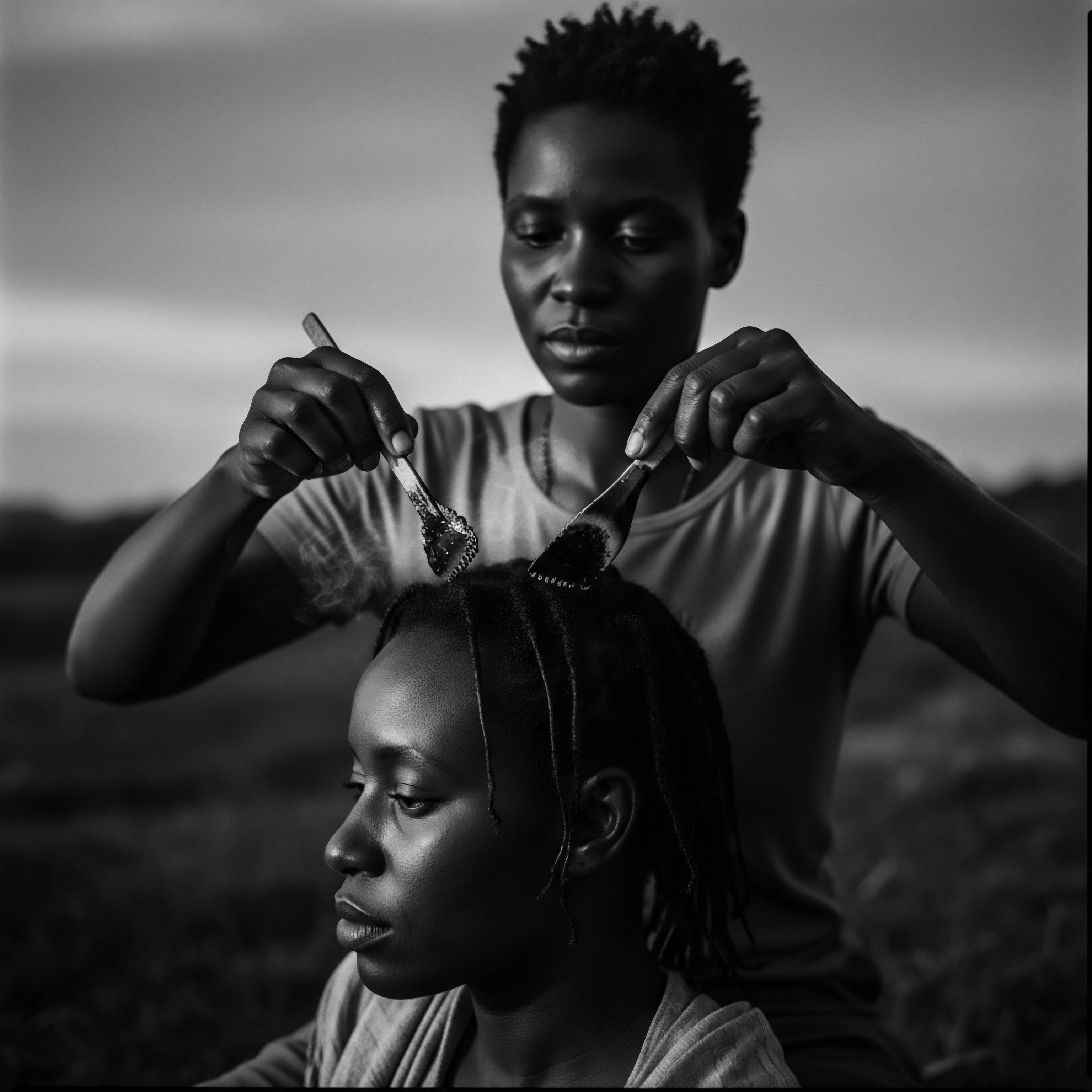
Fundamentals
The term ‘Ancestral Hair Practices’ signifies a deep, living reservoir of knowledge and techniques concerning the care and styling of textured hair, primarily originating from pre-colonial African societies and carried through the diasporic journey. This understanding moves beyond mere aesthetics, reaching into the profound cultural, social, and spiritual dimensions that hair held for countless generations. At its most fundamental, it represents a recognition that hair, particularly coily and kinky textures, was never simply a physical attribute but a potent communicator of identity, status, and communal belonging.
In ancient African civilizations, hair served as a sophisticated visual language. The way one’s hair was styled could convey a wealth of information, from a person’s age, marital status, and social standing to their ethnic identity, religious affiliation, and even their wealth. For example, in many West African societies like the Wolof, Mende, Mandingo, and Yoruba, specific braiding patterns acted as identifiers for tribal affiliations and community roles. This communal understanding meant that a glance at a person’s coiffure offered immediate insight into their place within the social fabric.
These foundational practices were deeply interwoven with daily life and spiritual beliefs. Hair was considered the most elevated part of the body, closest to the divine, holding spiritual power and serving as a conduit for communication with ancestors and deities. The meticulous processes of washing, oiling, braiding, or twisting, often taking hours or even days, were not solitary acts. They unfolded as communal rituals, strengthening bonds between family and friends, transforming hair care into a shared experience of connection and cultural preservation.
Ancestral Hair Practices embody the profound cultural and spiritual significance hair held in ancient African societies, serving as a silent language of identity and community.

Early Echoes from the Source
The earliest depictions of such practices trace back thousands of years. Archaeological evidence, including rock paintings from the Sahara desert dating to 3500 BCE, showcases women with intricate cornrows, marking these styles as some of humanity’s oldest forms of hair adornment. Ancient Egyptian depictions also feature elaborate wigs and braids, signifying status and religious beliefs. This deep historical lineage underscores that textured hair care traditions were not haphazard but developed with intentionality, wisdom, and a sophisticated understanding of hair’s unique properties.
Natural materials sourced from the environment formed the basis of these early hair care regimens. Ingredients such as shea butter, various plant oils, and herbs were used to nourish, protect, and style hair. These natural remedies were chosen for their moisturizing and scalp-health benefits, reflecting an intimate knowledge of the land and its offerings. The continuity of these traditional ingredients in modern textured hair care speaks to their enduring efficacy and the wisdom passed down through generations.
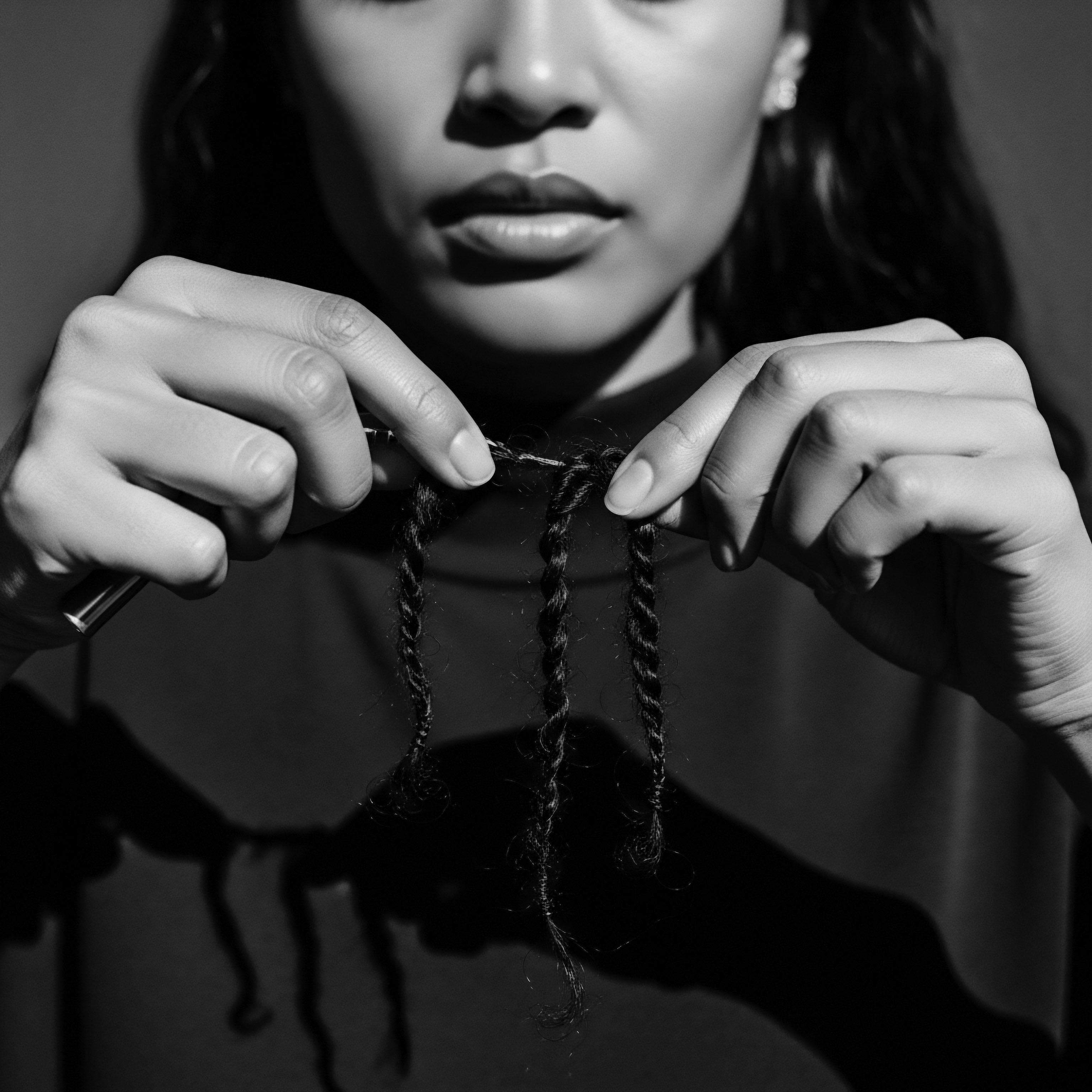
The Symbolism of Early Hairstyles
Hairstyles conveyed nuanced messages. For instance, a young Wolof girl might partially shave her head to indicate she was not of marrying age. Among the Himba tribe in Namibia, dreadlocked styles coated with red ochre paste symbolized their connection to the earth and their ancestors. These specific stylings were not merely decorative; they were living symbols, constantly communicating an individual’s journey and affiliations within their community.
- Cornrows ❉ Often indicating family lineage and status, with patterns sometimes signifying geographic origin or tribal affiliation.
- Braids ❉ Used to convey marital status, age, or readiness for life stages, sometimes adorned with beads or shells.
- Shaved Patterns ❉ Signifying mourning, age, or specific community roles, demonstrating a deliberate interaction with hair as a canvas.
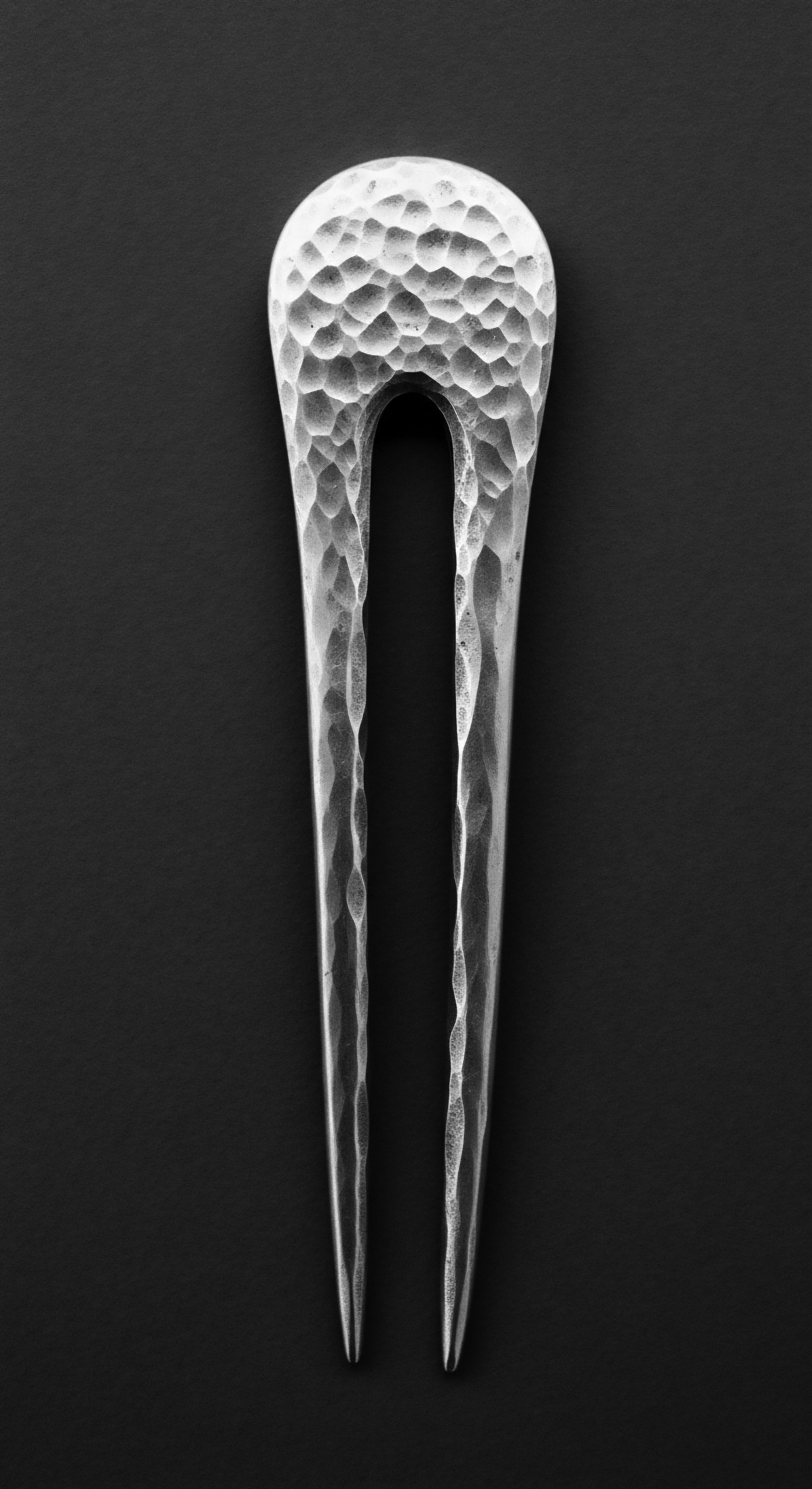
Intermediate
Expanding upon the foundational understanding, ‘Ancestral Hair Practices’ at an intermediate level delves into the ways these heritage practices have been sustained, adapted, and reinterpreted across generations and geographies, particularly within the African diaspora. This layer of meaning clarifies how the historical relationship with textured hair became a testament to resilience and self-expression, even in the face of adversity. The practical applications within traditional and evolving hair care rituals for Black and mixed hair demonstrate a continuous dialogue between past wisdom and present needs.
The transatlantic slave trade presented a stark disruption to African hair traditions. Enslaved Africans were often stripped of their traditional tools, accessories, and the communal spaces where hair care rituals unfolded. Their hair was frequently shaved, a deliberate act of dehumanization aimed at erasing identity and severing connections to homeland and heritage. Despite these brutal attempts at cultural obliteration, the ingenuity and determination of enslaved people ensured that these practices persisted, often in clandestine forms.
Through generations of adaptation, Ancestral Hair Practices transformed into acts of profound cultural preservation and resistance, ensuring heritage endured.
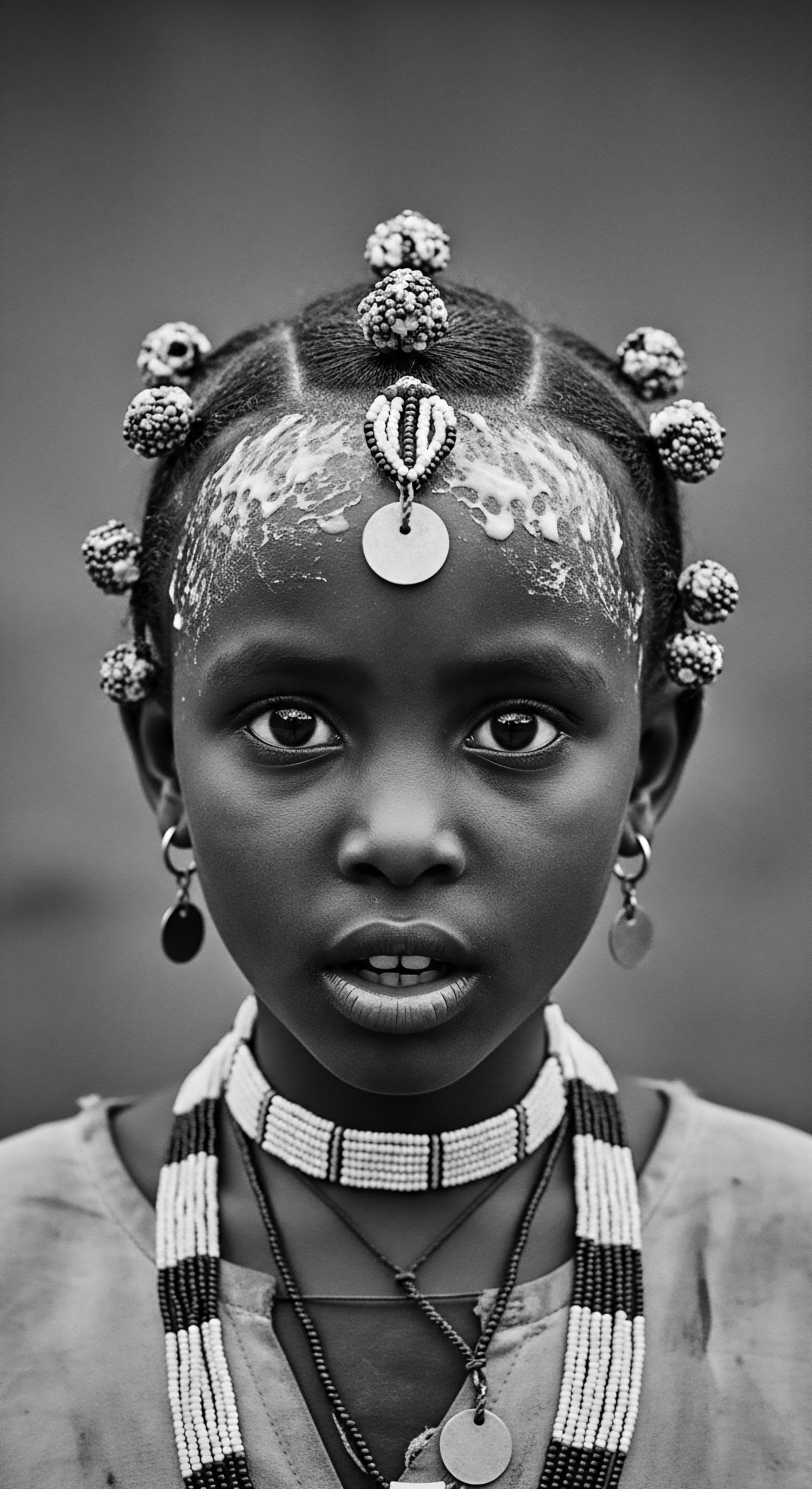
The Tender Thread of Continuity
Hair care on plantations, though severely limited by circumstances, became a vital site of cultural survival and resistance. Women found ways to maintain their hair heritage, using available materials like fabrics and scarves to protect their hair. The communal aspect of hair care, often relegated to Sundays, the only day of rest, continued to provide a space for bonding and sharing, albeit under duress. This collective act of caring for hair was a quiet, yet powerful, assertion of identity and dignity.
Cornrows, in particular, acquired a hidden significance during this period. Beyond their aesthetic and social meaning, they became a discreet means of communication and survival. Enslaved people used specific braiding patterns to create coded maps, indicating escape routes or safe havens along pathways to freedom.
Small tools or seeds were sometimes hidden within the tightly woven braids, serving as provisions for those seeking liberation. This practical application of hair styling underscores the deep, often life-saving, ingenuity embedded within Ancestral Hair Practices.
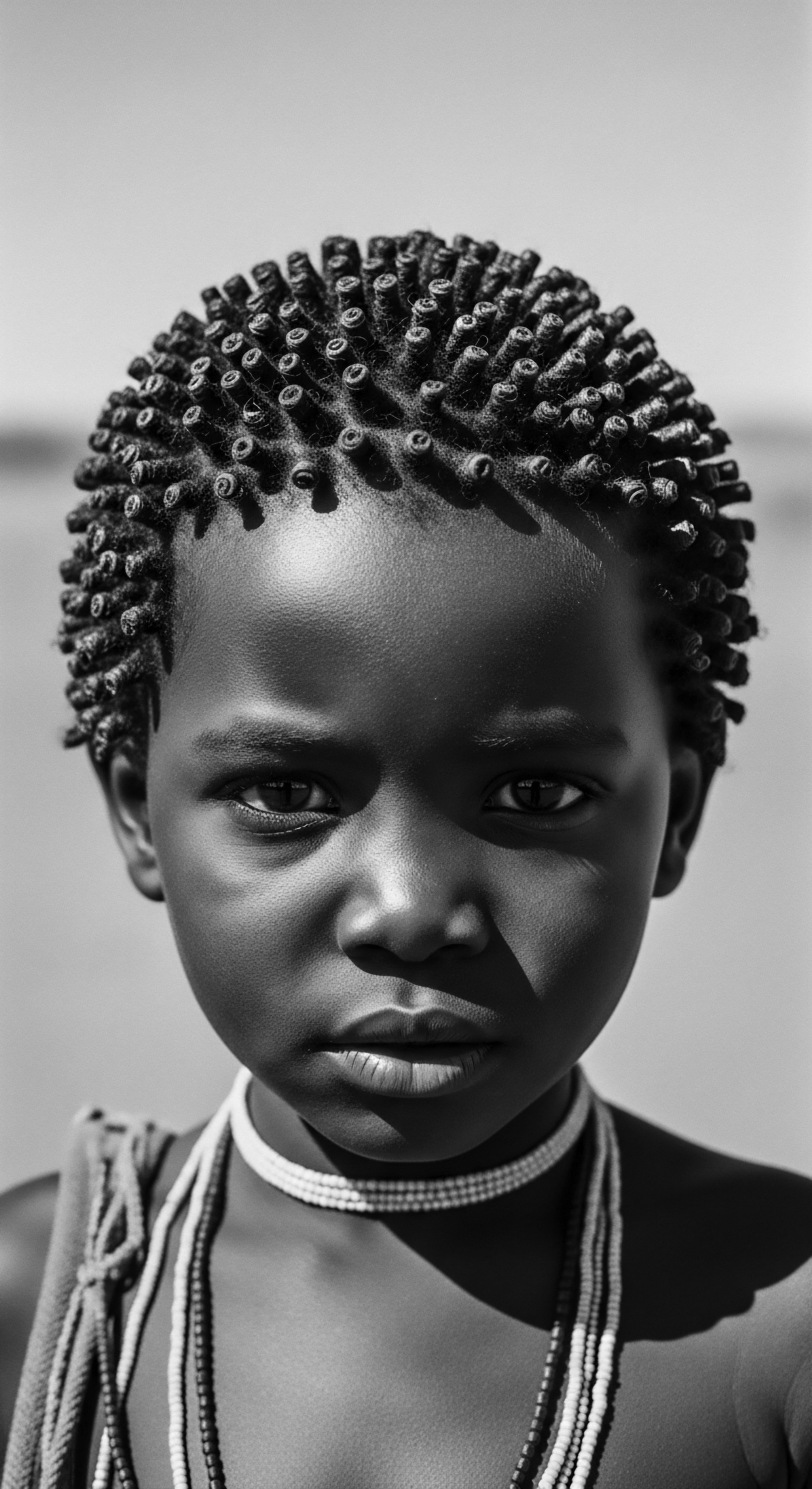
Adaptation and Innovation in the Diaspora
As generations passed, the practices adapted to new environments and evolving social conditions. While Eurocentric beauty standards often pressured individuals to alter their natural hair textures, the underlying knowledge of caring for textured hair persisted. The late 19th and early 20th centuries saw the rise of innovators like Madam C.J.
Walker, who, despite popularizing straightening tools like the hot comb, also established an industry focused on Black hair care products and economic independence for Black women. Her work, while sometimes viewed through the lens of assimilation, simultaneously addressed the specific needs of textured hair and provided opportunities within the community.
The mid-20th century witnessed a resurgence of pride in natural hair, particularly during the Civil Rights Movement. Styles like the Afro became potent symbols of Black pride, self-acceptance, and political defiance. This period marked a deliberate reclaiming of Ancestral Hair Practices, transforming them from hidden acts of resistance into overt declarations of identity. The return to natural styles like cornrows, braids, and headwraps was not simply a fashion choice but a powerful statement against imposed beauty norms.
The continuation of Ancestral Hair Practices through the diaspora has manifested in various forms ❉
- Communal Grooming ❉ The tradition of shared hair care sessions, whether in homes or salons, remains a cornerstone, fostering social bonds and passing down techniques.
- Natural Ingredient Reliance ❉ A persistent preference for and use of natural oils, butters, and herbs, like shea butter, which continue to be mainstays in textured hair care.
- Protective Styling ❉ The ongoing application of styles like braids, twists, and locs, which safeguard delicate textured strands from environmental stressors and manipulation, a wisdom rooted in ancient practices.
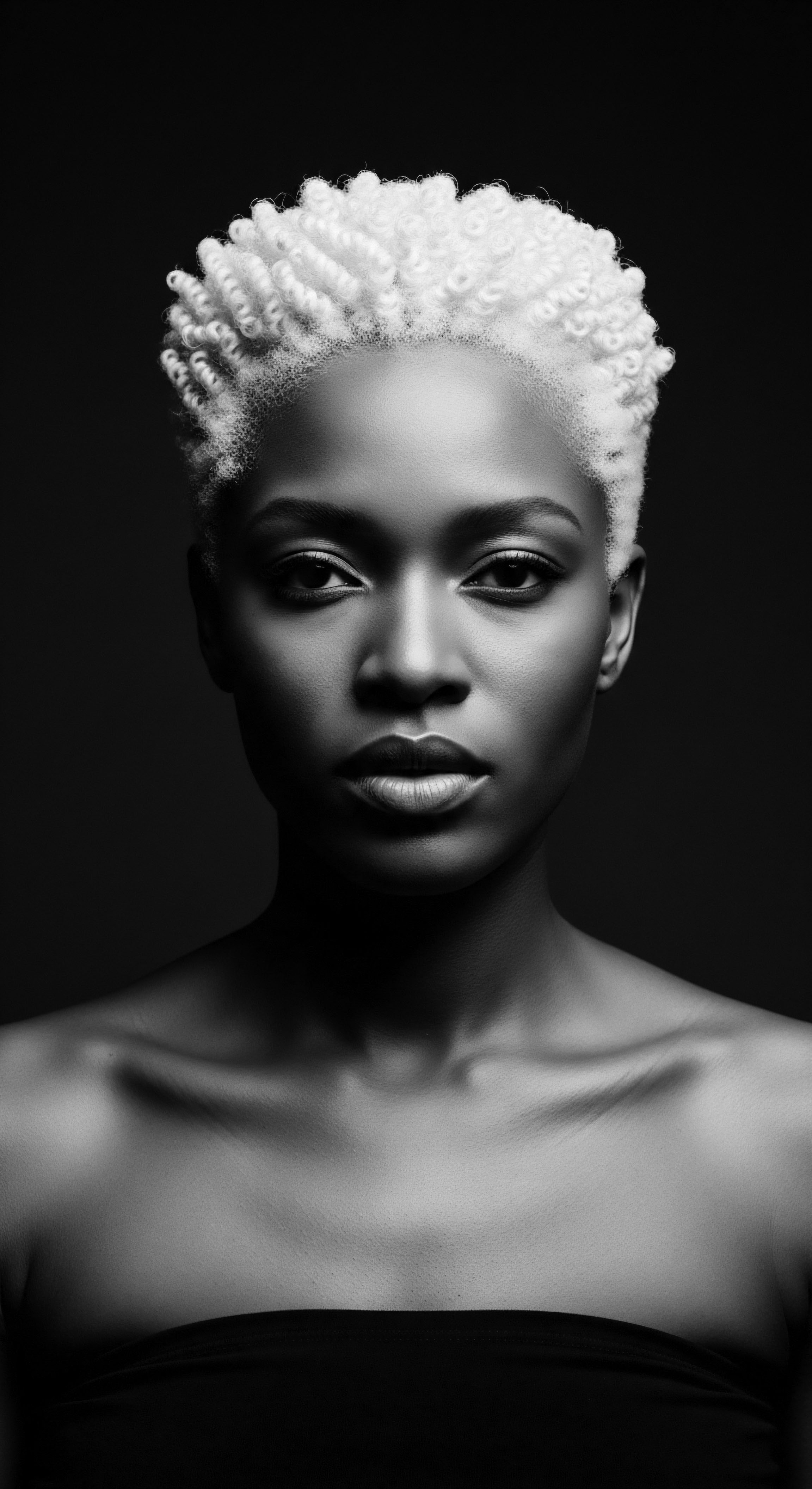
Academic
The advanced interpretation of ‘Ancestral Hair Practices’ signifies a comprehensive, scholarly understanding that integrates anthropological, historical, and scientific perspectives to elucidate its profound and enduring significance within the heritage of textured hair, particularly for Black and mixed-race communities. This academic delineation moves beyond simple definitions to analyze the complex interplay of biological realities, historical trajectories, psychological impacts, and social dynamics that shape the contemporary expression of these practices. It represents a living library of embodied knowledge, continually evolving while retaining its foundational connection to lineage.
From a scientific standpoint, the unique helical structure of textured hair, characterized by its elliptical cross-section and numerous points of curl, explains its propensity for dryness and tangling compared to straighter hair types. This inherent biological characteristic underscores the historical necessity for specialized care methods focused on moisture retention, gentle manipulation, and protective styling. Ancestral Hair Practices, therefore, were not arbitrary; they represented an intuitive, empirically developed science of hair care, passed down through generations, long before modern trichology provided the vocabulary for its mechanisms. The emphasis on oils, butters, and specific styling techniques was a direct response to the biological requirements of textured hair, optimizing its health and manageability.
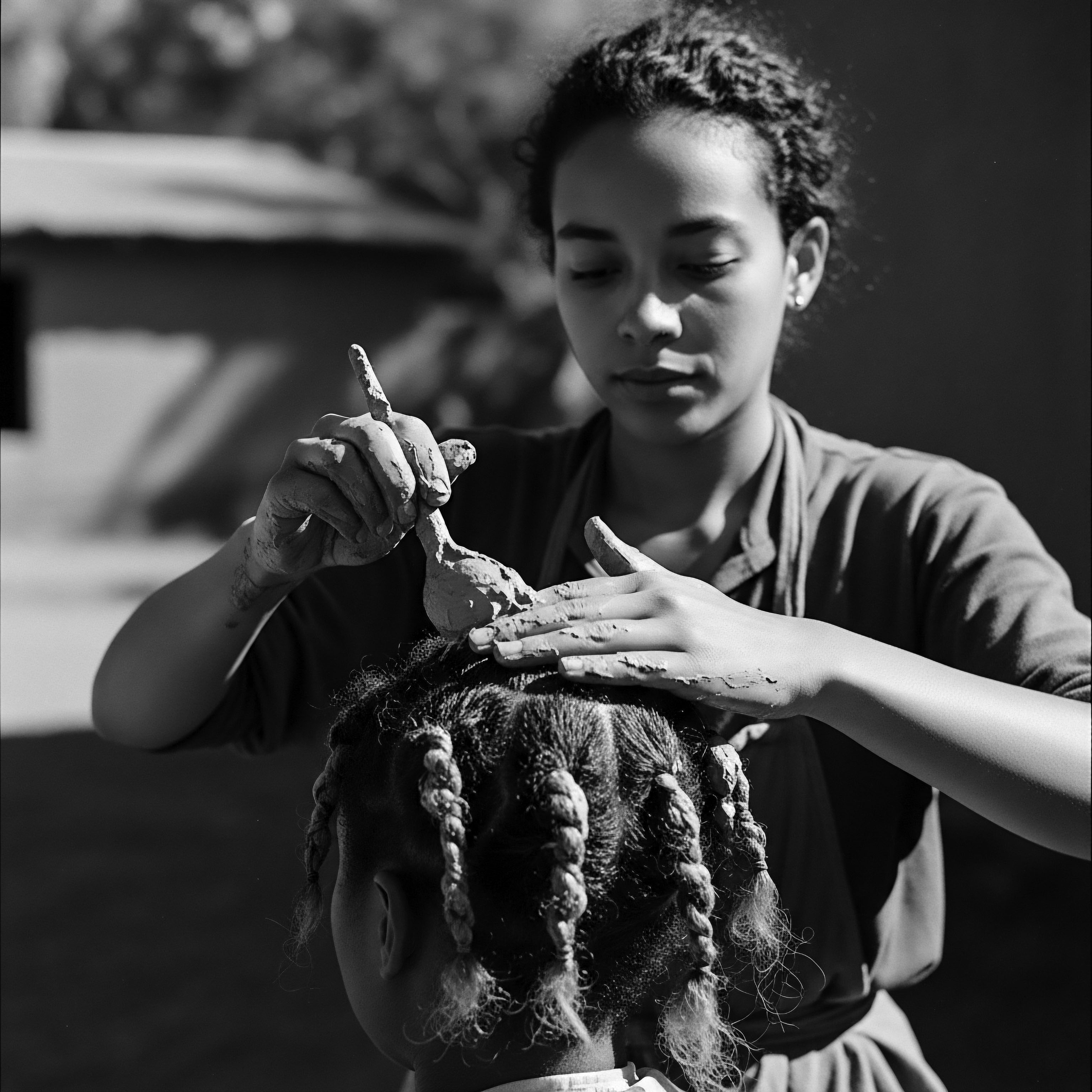
Anthropological Dimensions and Cultural Preservation
Anthropologically, Ancestral Hair Practices serve as a powerful conduit for cultural memory and group cohesion. They are performative acts that reaffirm identity, belonging, and a shared history. The intricate processes involved, from the preparation of natural ingredients to the hours spent in communal styling, are rituals that transmit cultural values, storytelling, and intergenerational wisdom.
This is particularly evident in the African diaspora, where these practices became crucial for resisting cultural erasure during periods of enslavement and colonialism. The act of maintaining specific hairstyles, even under oppressive conditions, was a silent declaration of selfhood and a connection to an ancestral past.
Ancestral Hair Practices are not static historical relics but dynamic expressions of cultural resilience, encoded with generations of wisdom for textured hair.
A compelling historical example of this resistance is documented in the slave narratives from the Federal Writers’ Project, such as the account of “Aunt Tildy” Collins. Her descriptions reveal how hair preparation for Sunday school by her mother and grandmother involved using a “jimcrow” comb before threading hair with fabric or cotton. This technique aimed to achieve defined curls when undone, a method devised to maintain specific textures and styles. Such practices, though seemingly domestic, were profound acts of cultural continuity.
The ability to style one’s hair, even in limited ways, was a reclamation of agency and a subtle defiance against the systematic attempts to strip enslaved individuals of their identity. The communal aspect of these Sunday hair sessions, as noted by Collins, further cemented social bonds and preserved shared cultural heritage, transforming hair care into a collective act of resilience and identity affirmation.
Moreover, the cultural significance of hair extended to covert communication during the era of slavery. As historian and author Lori Tharps notes in her work on Black hair history, specific cornrow patterns were used to convey messages or even maps for escape routes. This illustrates a sophisticated understanding of hair as a medium for conveying information, a testament to the profound adaptability and symbolic weight of Ancestral Hair Practices. The survival of these practices, despite extreme pressures, speaks to their deep roots in cultural identity and their capacity to serve as vehicles for survival and liberation.
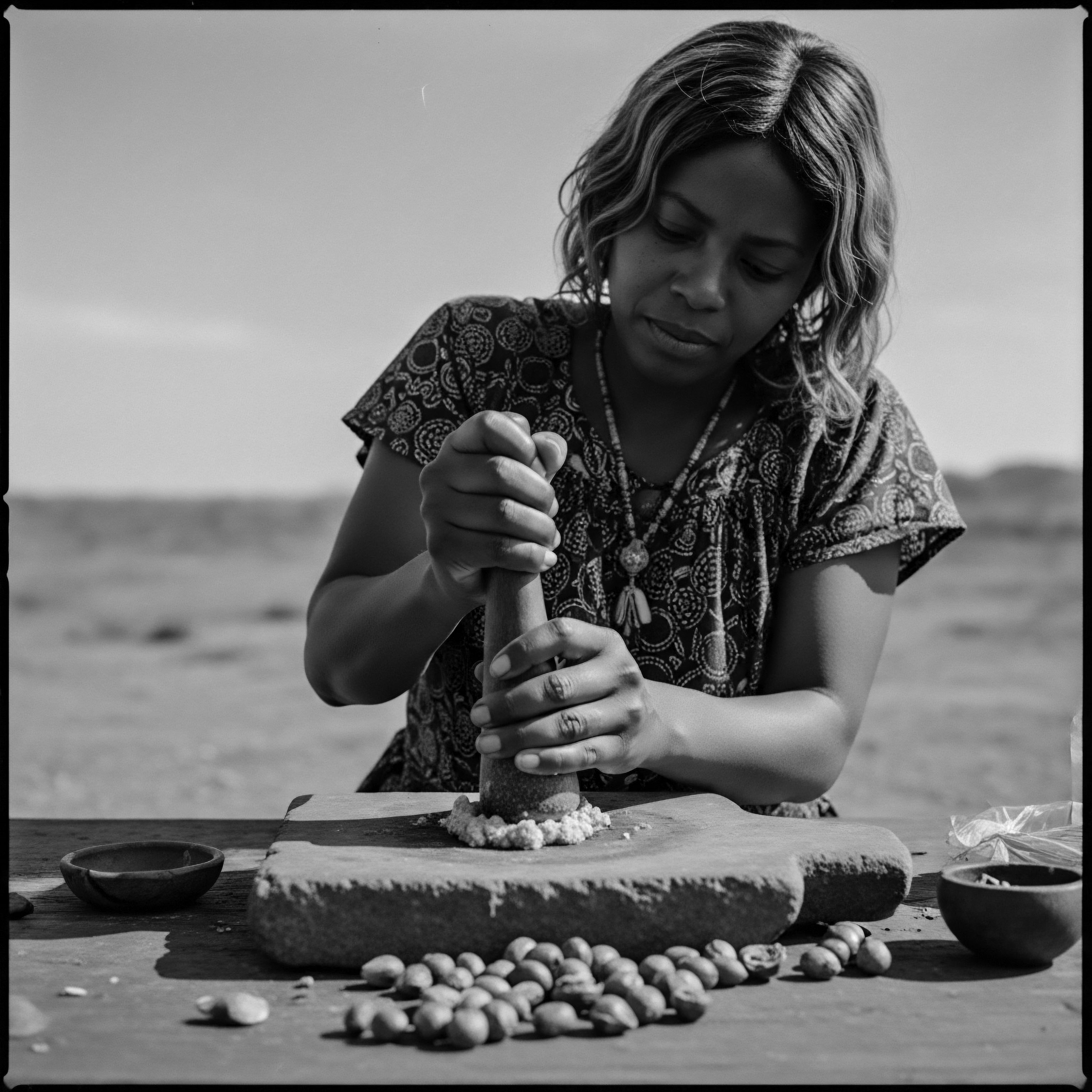
Scientific Validation of Traditional Approaches
Modern scientific understanding often validates the efficacy of traditional Ancestral Hair Practices. For instance, the use of shea butter (Butyrospermum parkii), a staple in African hair care for centuries, is now scientifically recognized for its high concentration of fatty acids and vitamins (A, D, E, and F). These components provide superior moisturizing, nourishing, and protective properties, particularly beneficial for the dry and fragile nature of textured hair.
Its traditional application as a healing salve and skin protectant also extends to scalp health, reducing irritation and promoting a healthy environment for hair growth. This convergence of ancestral wisdom and contemporary scientific validation underscores the profound knowledge embedded within these historical methods.
The traditional emphasis on protective styles—such as braids, twists, and locs—minimizes manipulation and exposure to environmental stressors, thereby reducing breakage and encouraging length retention. This scientific benefit of protective styling, understood intuitively by ancestral practitioners, aligns perfectly with modern trichological recommendations for maintaining the integrity of textured hair. The practices inherently address the specific needs arising from the hair’s unique curl pattern and cuticle structure.
| Ancestral Practice (Heritage) Application of natural oils and butters (e.g. shea butter, coconut oil). |
| Modern Scientific Understanding Provides fatty acids and vitamins for moisture, scalp health, and cuticle sealing, reducing transepidermal water loss. |
| Ancestral Practice (Heritage) Protective styling (braids, twists, locs). |
| Modern Scientific Understanding Minimizes physical manipulation, reduces breakage, and protects hair from environmental damage. |
| Ancestral Practice (Heritage) Communal hair care sessions. |
| Modern Scientific Understanding Reinforces social bonds, transmits intergenerational knowledge, and reduces individual styling burden. |
| Ancestral Practice (Heritage) Use of wide-tooth combs or finger detangling. |
| Modern Scientific Understanding Reduces mechanical stress and breakage on delicate, coily strands. |
| Ancestral Practice (Heritage) The enduring value of Ancestral Hair Practices lies in their inherent synergy with the biological needs of textured hair, validated by contemporary scientific inquiry. |
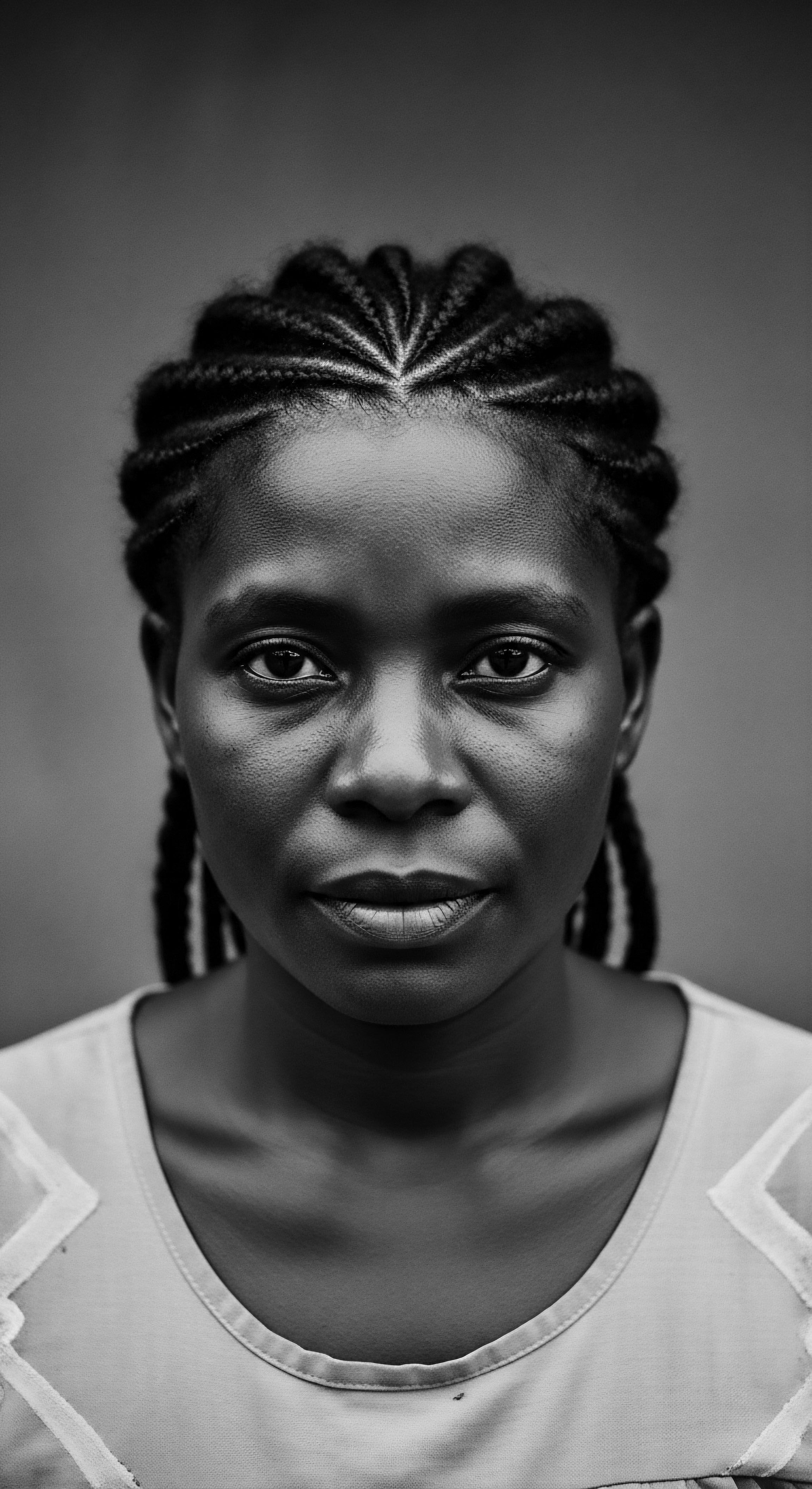
Sociological and Psychological Ramifications
From a sociological lens, Ancestral Hair Practices are central to the politics of appearance and identity for Black and mixed-race individuals. Historically, societal pressures to conform to Eurocentric beauty standards led to the devaluation of natural textured hair, creating psychological burdens. The resurgence of natural hair movements in recent decades represents a powerful counter-narrative, where choosing to wear natural hair is an act of self-acceptance, cultural affirmation, and resistance against oppressive beauty ideals. This choice connects individuals to their ancestral lineage, fostering a sense of pride and belonging that transcends mere personal preference.
The concept of ‘good hair’ versus ‘bad hair,’ a construct born from colonial and post-slavery influences, has slowly begun to dismantle as individuals reclaim their heritage through hair. The psychological benefits of embracing Ancestral Hair Practices include enhanced self-esteem, a stronger sense of cultural identity, and a deeper connection to community. This process involves not only physical care but also a mental shift, acknowledging the beauty and resilience inherent in textured hair as a direct link to a rich, enduring past.
The economic implications of Ancestral Hair Practices are also noteworthy. The Black hair care industry, valued at billions of dollars, often sees a disproportionately small percentage of ownership by Black entrepreneurs. Reclaiming and promoting ancestral practices can contribute to economic empowerment within communities by supporting Black-owned businesses that prioritize natural, heritage-informed products and services. This creates a circular economy that reinforces cultural values and self-sufficiency, aligning with the spirit of collective care that defined many ancestral communities.
- Identity Affirmation ❉ Choosing ancestral styles serves as a visible declaration of cultural pride and connection to heritage.
- Community Building ❉ Shared hair care rituals strengthen intergenerational bonds and collective identity within Black and mixed-race communities.
- Economic Empowerment ❉ Supporting businesses rooted in traditional ingredients and practices fosters self-sufficiency and community wealth.
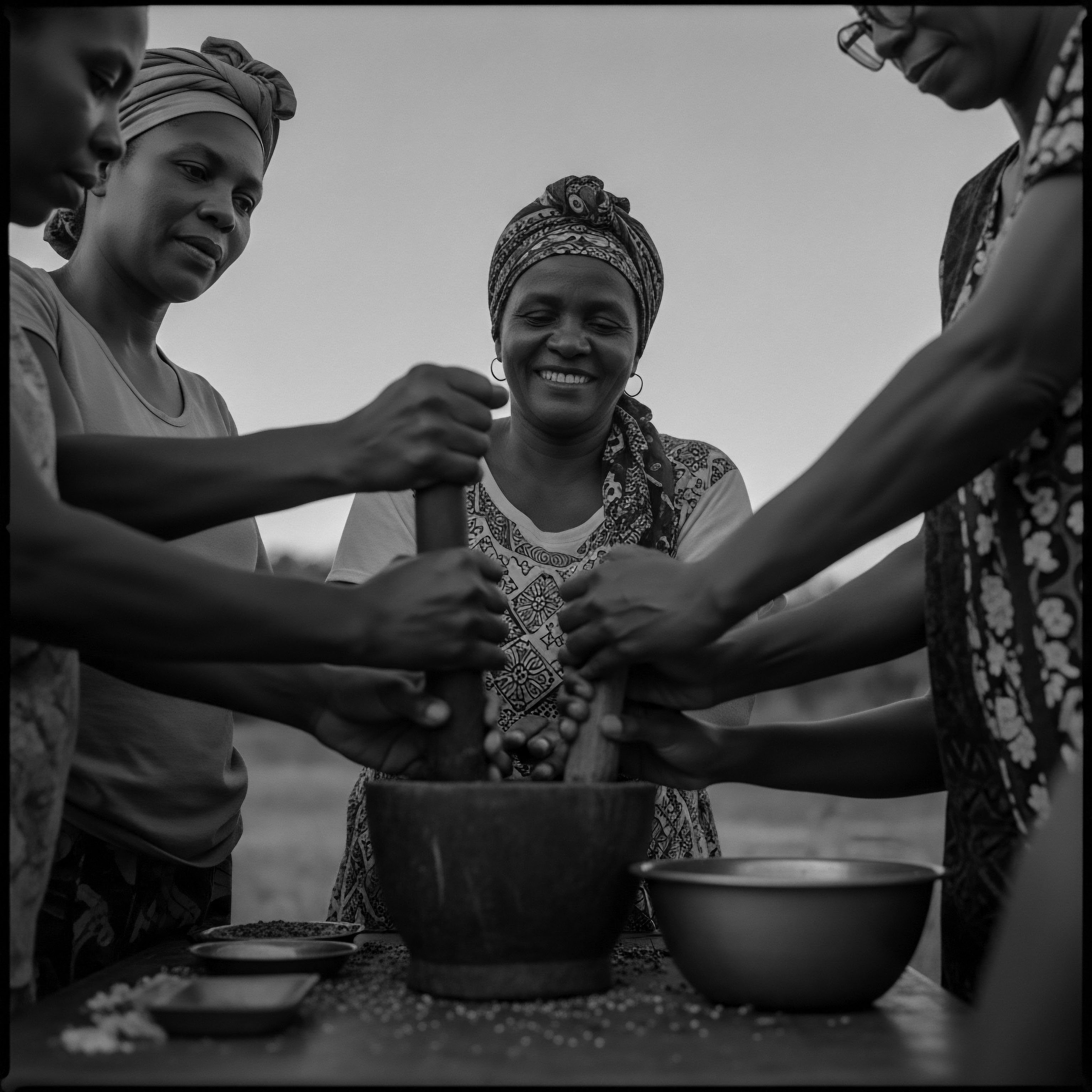
Reflection on the Heritage of Ancestral Hair Practices
The journey through Ancestral Hair Practices is more than a study of historical methods; it is a profound meditation on the very ‘Soul of a Strand.’ Each coil, each curve, each textured strand carries the echoes of countless generations, a living archive of wisdom, struggle, and enduring beauty. This heritage, deeply embedded within Black and mixed-race hair experiences, reminds us that hair is not a superficial adornment but a profound marker of identity, a canvas for storytelling, and a resilient symbol of continuity. The wisdom of those who came before us, who understood the unique biology of textured hair and devised ingenious ways to care for it with reverence and purpose, continues to guide us.
To truly appreciate Ancestral Hair Practices is to recognize the unwavering spirit of those who preserved them against formidable odds. It is to acknowledge the resilience of communities that, despite forced displacement and cultural assault, found ways to maintain a connection to their roots through the very fibers of their being. The simple act of braiding, oiling, or adorning hair becomes a powerful affirmation of self, a reclamation of narrative, and a celebration of an unbroken lineage.
This living heritage calls upon us to look beyond fleeting trends and commercial narratives, inviting us instead to listen to the whispers of ancestral knowledge. It encourages a holistic approach to textured hair care, one that honors its unique biological composition with scientifically sound methods, while simultaneously revering its historical and cultural significance. The journey of Ancestral Hair Practices, from the elemental biology and ancient communal rituals to its role in voicing identity and shaping futures, stands as a testament to the enduring strength and beauty of textured hair. It is a story of survival, creativity, and the persistent human need to connect with one’s past to inform a vibrant future.
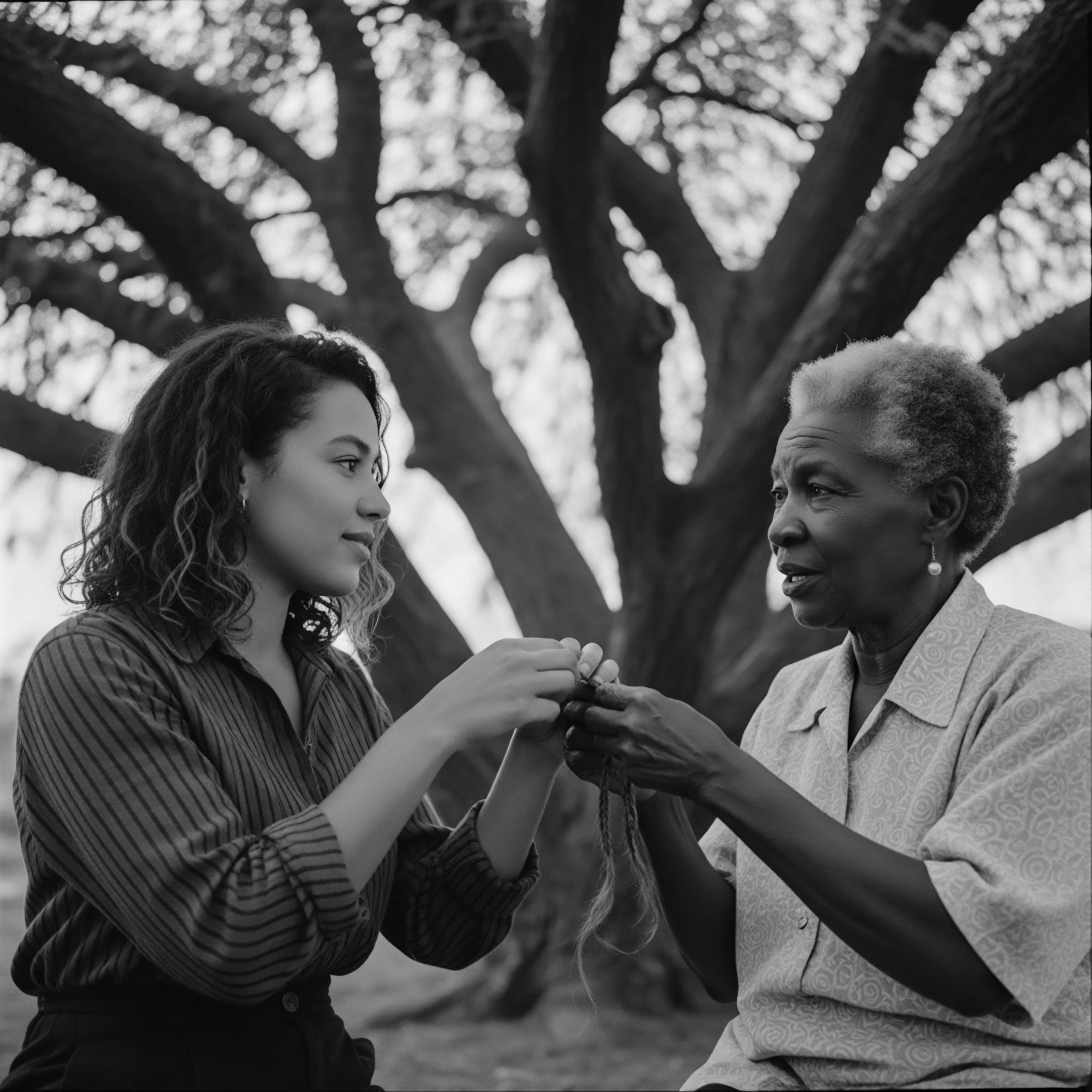
References
- Byrd, A. L. & Tharps, L. D. (2024). Hair Story ❉ Untangling the Roots of Black Hair in America. St. Martin’s Press.
- Oforiwa, A. (2023). The History and Culture of African Natural Hair ❉ From Ancient Times to Modern Trends. AMAKA Studio.
- Chimbiri, K. N. (2020). The Story of Afro Hair ❉ 5000 years of history, fashion and styles. New Beacon Books.
- Kwaw-Swanzy, Z. (2023). A Quick Ting On The Black Girl Afro. Black Girl Afro Publishing.
- Sieber, R. & Herreman, F. (2000). Hair in African Art and Culture. Museum for African Art.
- Jacobs-Huey, L. (2006). The Hairdo Handbook ❉ African American Hair in Words and Pictures. Rutgers University Press.
- Hooks, B. (1992). Black Looks ❉ Race and Representation. South End Press.
- Banks, I. (2000). Hair Matters ❉ Beauty, Power, and Black Women’s Consciousness. New York University Press.
- Walker, A. (1992). The Temple of My Familiar. Harcourt Brace Jovanovich. (Contains fictional narratives that reflect historical hair practices).
- Patton, M. (2006). Twisted ❉ The Tangled History of Black Hair Culture. Simon & Schuster.
